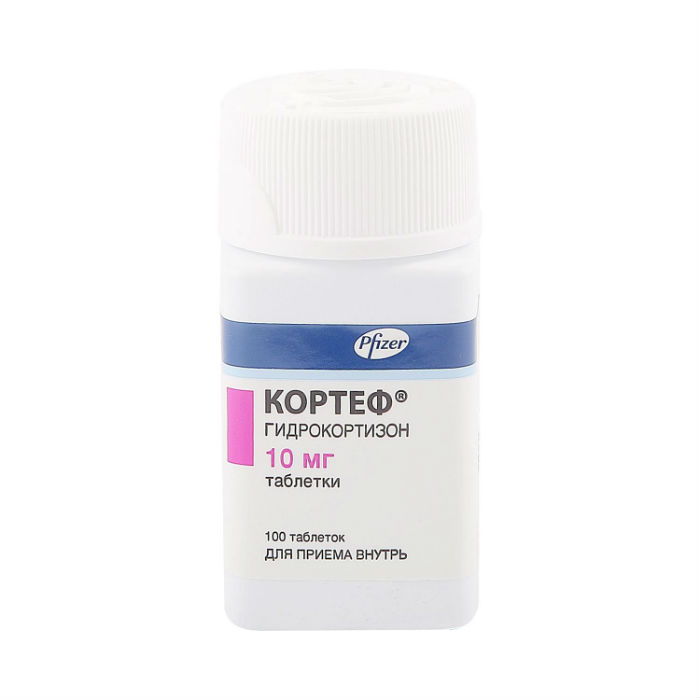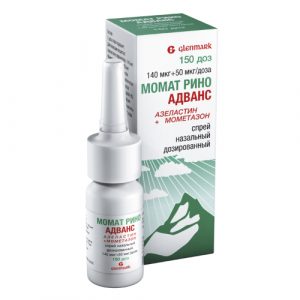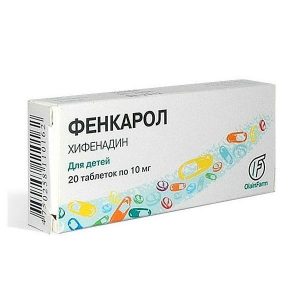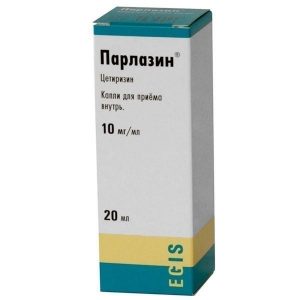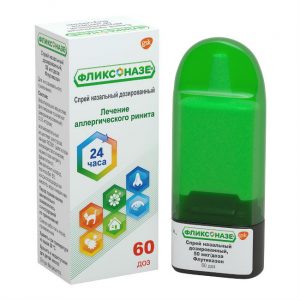Description
Release form
Tablets.
Packing
100 pcs.
Pharmacological action of
CORTEF is a synthetic analogue of natural corticosteroids. It has primarily anti-inflammatory effects, has moderately expressed mineralocorticoid properties, and can be used for replacement therapy with a deficiency of hormones in the adrenal cortex. Like other corticosteroids, hydrocortisone has significant and diverse metabolic effects. In addition, hydrocortisone alters the body’s immune response.
Indications
In endocrinology
– adrenocortical insufficiency (hydrocortisone is the drug of choice for replacement therapy): primary (Addison’s disease), usually in combination with mineralocorticoid preparations, secondary (usually without the addition of mineralocorticoids)
– congenital adrenal hyperplasia
– subacute thyroiditis
– hypercalcemia in malignant neoplasms.
In rheumatology
As an additional short-term therapy (during an acute attack or exacerbation) in: – psoriatic arthritis
– rheumatoid arthritis, including juvenile rheumatoid arthritis (in some cases, low-dose maintenance therapy may be required)
– ankylosing spondylitis subacute bursitis
– acute nonspecific tendosynitis
– acute gouty arthritis
– post-traumatic osteoarthritis
– bluish with osteoarthritis
– epicondylitis.
In case of exacerbations or as maintenance therapy in some cases with: – systemic lupus erythematosus
– systemic dermatomyositis (polymyositis)
– acute rheumatic heart disease.
In dermatology
– pemphigus
– herpetiform bullous dermatitis
– severe erythema multiforme (Stevens-Johnson syndrome)
– exfoliative dermatitis
– fungal mycosis (Aliber s disease) srdloritis severe – dermatitis severe – dermatitis
In allergology
Control of severe or disabling allergic conditions that are not amenable to adequate treatment with appropriate drugs: – seasonal or perennial allergic rhinitis
– serum sickness
– bronchial asthma
– contact dermatitis
– atopic dermatitis
– hypersensitivity reactions to drugs.
In ophthalmology
Severe acute and chronic allergic and inflammatory diseases involving the eyeball and its appendages, such as: – allergic conjunctivitis
– keratitis
– allergic ulcers of the cornea
– eye damage with herpes erytes chorioretinitis
– inflammatory diseases of the anterior segment of the eye
– diffuse posterior uveitis and choroiditis
– optic neuritis
– sympathetic ophthalmia.
In pulmonology
– symptomatic sarcoidosis
– Leffler’s syndrome, non-treatable by other means
– berylliosis
– fulminant or disseminated pulmonary tuberculosis in combination with appropriate anti-tuberculosis chemotherapy
– aspiration pneumonia.
In hematology,
– idiopathic thrombocytopenic purpura in adults
– secondary thrombocytopenia in adults
– acquired (autoimmune) hemolytic anemia
– erythroblastopenia (erythroplasty anemia) srdlk.
In Oncology
For palliative care: – leukemia and lymphoma in adults
– acute leukemia in children.
In nephrology,
is used to stimulate diuresis or remission of proteinuria in the nephrotic syndrome without uremia, an idiopathic type, or due to systemic lupus erythematosus.
In neurology,
is an exacerbation of multiple sclerosis.
Other indications for use
– tuberculous meningitis with a subarachnoid block or with a threat of block: the drug is used simultaneously with appropriate anti-tuberculosis chemotherapy.
Contraindications
Systemic fungal infections
Hypersensitivity to the components of the drug in history.
Composition
1 tab. contains sodium alendronate trihydrate 91.350 mg, which corresponds to the content of alendronic acid 70 mg
excipients: microcrystalline cellulose, anhydrous colloidal silicon dioxide, croscarmellose sodium,
magnesium stearate sheath composition: Luster Clear LC 103, microcrystalline macrofluoroferfenean dlocarfarafan 5600, 650 carrageenan, Composition
1 tab. contains hydrocortisone 10 mg.
Excipients: calcium stearate, corn starch, lactose, mineral oil, sorbic acid, sucrose.
Dosage and administration
The initial dose of the drug can vary from 20 mg to 240 mg per day, depending on the indications and severity of the disease. In the future, the dose can be maintained at the same level or selected (individually, based on the clinical picture) until the desired effect is achieved. After achieving the desired reaction, the necessary maintenance dose is established, gradually reducing the dose at appropriate intervals until the lowest dose is achieved, which maintains the desired effect. It should be borne in mind that when changing doses, careful monitoring of the patient is required.
Dose adjustment is carried out in the following cases: when the clinical picture changes (due to remission or exacerbation of the disease), with individual patient sensitivity. In stressful situations (not related to the disease for which therapy is prescribed), the dose of the drug should be increased for this period of time.
If it is necessary to cancel the drug after long-term therapy, it is recommended to reduce the dose gradually.
If, after a sufficiently long period of use, the clinical effect is not achieved, Cortef should be discontinued and alternative therapy prescribed. When prescribing the drug for exacerbation of multiple sclerosis, it must be taken into account that during the first week of therapy, the daily dose of GCS is 200 mg of prednisolone. Then, for a month, GCS is prescribed daily at the rate of 80 mg of prednisolone per day. When determining the dose of Cortef, it is necessary to take into account that 20 mg of hydrocortisone is equivalent to 5 mg of prednisolone.
Storage conditions
The drug should be stored out of the reach of children at a controlled room temperature (20 ° to 25 ° C).
Active ingredient
Hydrocortisone
lekarstvennaja form
tablets
Appointment
Detyam on purpose doctor, Vzrosl m on purpose doctor, Beremenn m on purpose doctor, Kormyaschym mothers
